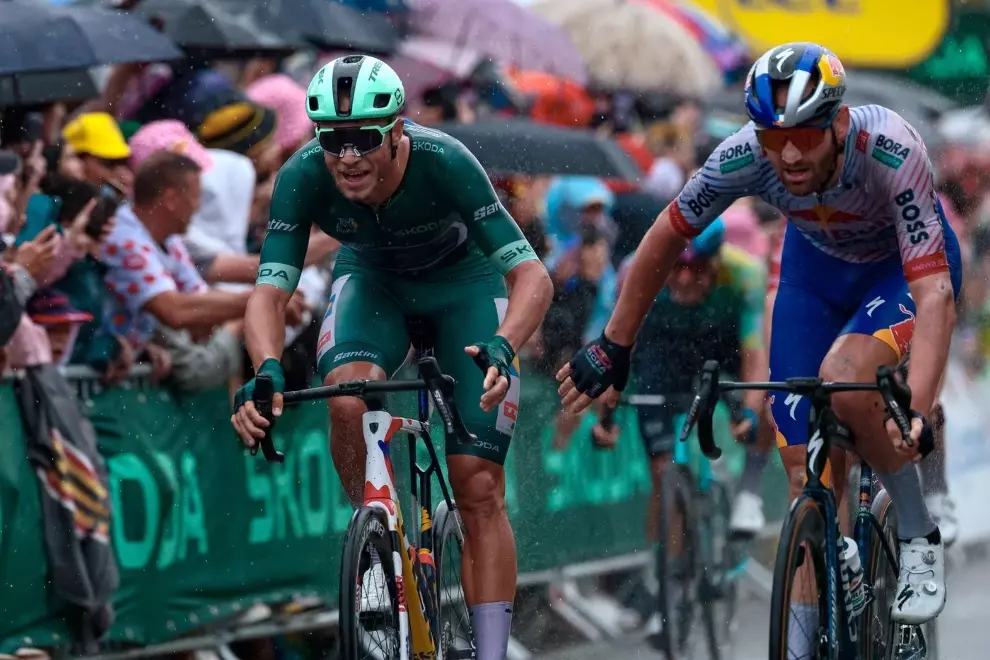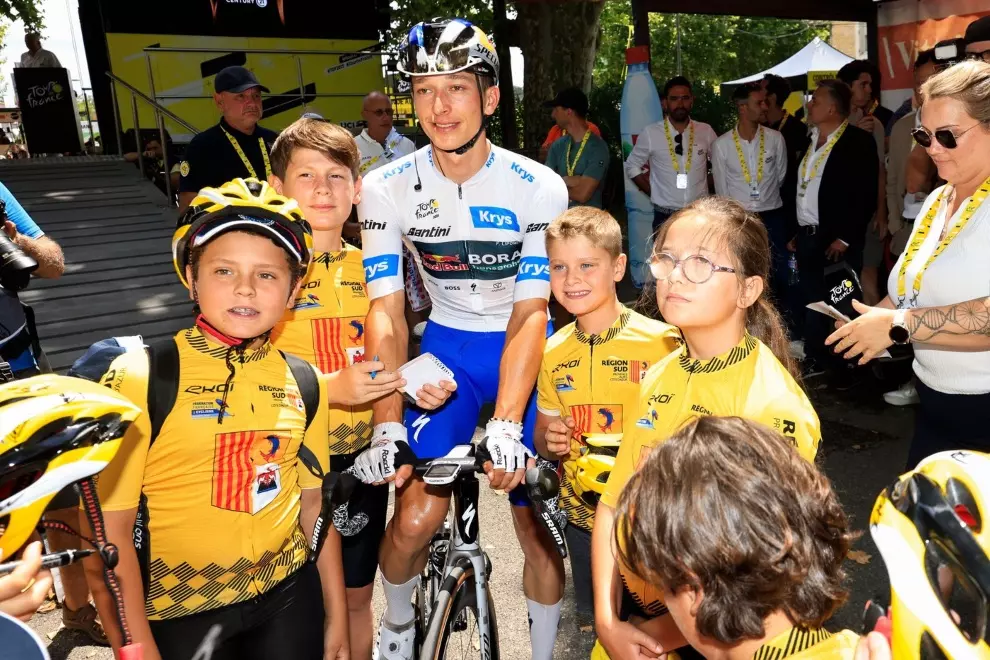In this article, I’m going to explore how these bikes have evolved, focussing on gearing ratios, aerodynamics, weight, and specialised designs for the various terrain the Tour offers. Additionally, I’ll delve into the developments in wheel technology and the increasing emphasis on wider tire widths. First up though, let’s look at gears.
(Note, you’ll see the word ‘optimise’ used a lot in this article, just saying).
Gearing ratios
One of the significant advancements in cycling tech over the last couple of decades has been the continued refinement of gearing ratios. In the early 2000s when I was riding as a pro, we primarily relied on traditional double chainring setups with a limited range of gear options. In fact I had 8 sprockets to choose from where the pros now have 11 or 12. The lowest gearing I had back then was 39 x 25 for the hardest mountains. Looking back, I don’t know how I did it! However, with the introduction of compact chain sets, more gears and larger sprocket sizes, riders have now gained a much wider spectrum of ratios to choose from. This has enabled them to maintain an optimal cadence over various terrain, improving efficiency and reducing fatigue. A typical gear set up for a mountain stage of the Tour de France these days would be 36 x 32, with the option to go even lower should the climbs necessitate.
The advent of electronic shifting systems, such as Shimano’s Di2 and SRAM’s eTap, totally revolutionised gear changing by providing faster, more precise shifts. These electronic systems eliminated the need for traditional mechanical cables, resulting in faster, smoother gear changes and enhanced reliability. The seamless integration of electronic shifting systems has now become a standard feature in pro cycling, with wireless shifting now commonplace too. Although I don’t race anymore, I’d never go back to the old gear days!
Aerodynamics
Aerodynamics play a crucial role, where even the slightest reduction in wind resistance can translate into valuable time gains and/or watts and energy saved. Over the last two decades, bicycle manufacturers have invested heavily in wind tunnel testing and computational fluid dynamics (CFD) simulations to refine frame designs and improve aerodynamic efficiency. This search for more ‘free speed’ is neverending.
Modern bikes in the Tour feature frames with intricate tube profiles, aerodynamically optimised forks, and integrated components. The focus is on reducing drag by minimising the frontal area or leading edges of the bike, smoothing airflow around key areas such as the head tube, handlebars and integrating brake cables into the frame to reduce turbulence. This also gives these new bikes a really ‘clean’ uncluttered aesthetic. In short, they look great. Although it has to be said, I’m still in love with the look of the traditional steel frames of the past!

Specialised bikes for different terrains
Over the last decade or so teams at the Tour have begun employing a strategy of having specific bikes to suit different terrains. This would include a slightly heavier aero bike designed for flat and rolling stages, where aerodynamics and power transfer are critical. These aero bikes often feature deepsection carbon wheels, integrated handlebars and frames fine tuned for sprinting and efficient riding at high speed.
Conversely, for mountainous stages and demanding climbs, teams will use lightweight climbing bikes. These prioritise weight reduction to enhance the riders’ ability to tackle steep ascents. Climbing bikes typically feature ultralight frames, compact gearing, and minimalistic designs. By employing this strategy, teams can ensure their riders have the most suitable equipment for each stage, optimising their performance and conserving energy. That said, lighter bikes are now more aero than ever and aero bikes are lighter than ever, with some teams now opting for one singular bike for all types of terrain. The Ineos Grenadiers only use one bike for example, their Pinarello Dogmas.

Wheel technology
In recent years, there has been a notable shift towards wider tyre widths in pro cycling. Only 20 years ago, far narrower tyres were used, typically around 21-23mm in width. I remember descending high mountains on wet roads using only 21-23mm tyres running over 100psi in pressure. There’s no way you’d get me (or anyone) doing that now!
However, the now-known benefits of wider tyres, such as improved traction, lower rolling resistance, better puncture protection and increased comfort, coupled with a wider rim and improved aerodynamics, have prompted a paradigm shift in the peloton. With the gradual introduction of disc brakes over the last 5 years, which provide better modulation and stopping power, pro riders have been more open to the use of these wider tyres, which commonly range from 25mm to 28mm. These widths allow for lower tyre pressures without sacrificing rolling resistance, which translates into better handling on a variety of road surfaces for the reasons I’ve previously detailed. Again, I’d never go back to using narrow tyres. 28mm is what I use all the time now.
So, in short, the bikes ridden at the Tour de France over the last 20 years have experienced nothing short of a technological revolution. Each and every aspect of the bikes has been meticulously refined to maximise performance. Of course the quest for optimal performance continues apace, and it’ll be fascinating to witness how upcoming technological innovations shape the bikes ridden in the the Tours of the future. Hover bikes anyone? 😉
Finally and importantly, we can all ride these types of bikes ourselves. The tech ultimately trickles down to the consumer so we can all experience the feel of a thoroughbred machine. A machine that was tried and tested at the Tour de France, the humble bicycle’s ultimate playground.




